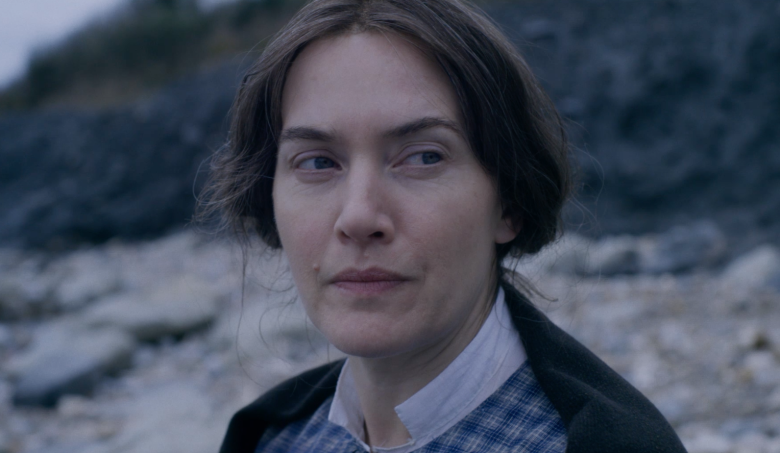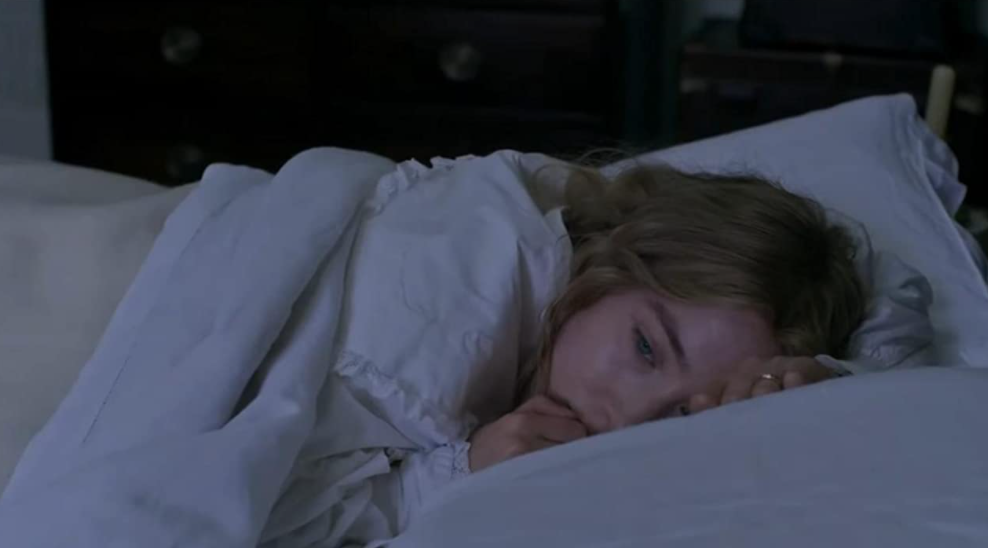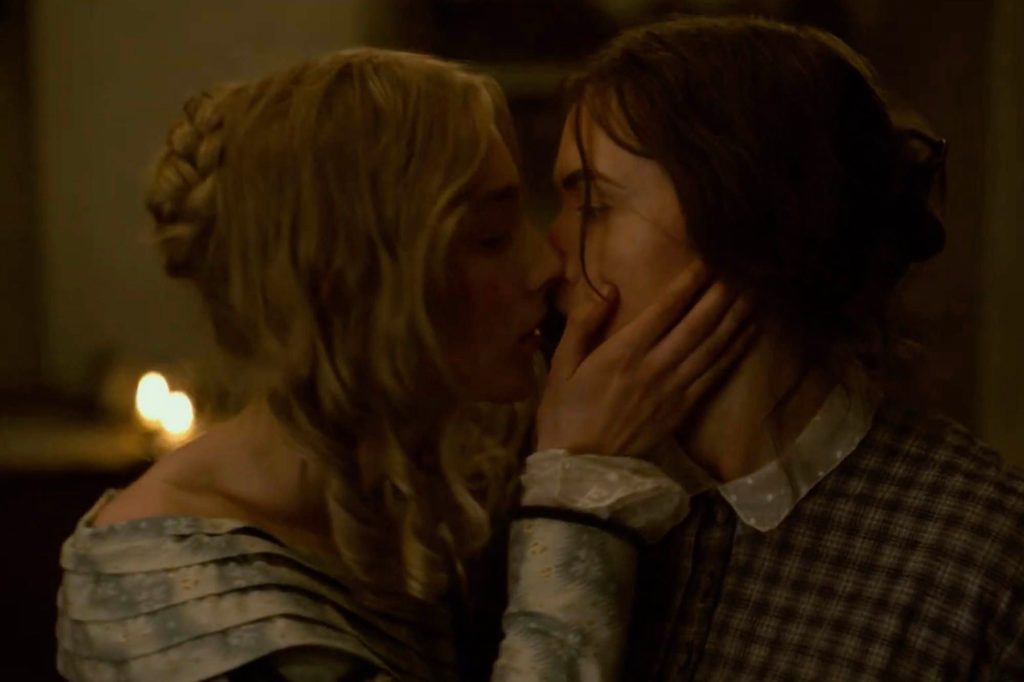'Space Sweepers' Review: A Charming Sci-Fi Adventure with a Political Message
Behind all the action, 'Space Sweepers' is a surprisingly heartfelt and progressive story about building community.
Francis Lee’s much-anticipated period romance, Ammonite, stars Kate Winslet and Saoirse Ronan as two women who fall in love against the backdrop of the English coast. Ammonite is both more and less than I expected, with Winslet and Ronan delivering stellar performances in a story that doesn’t quite live up to its potential.
Lee opens the film with an extended shot of a nameless woman scrubbing a museum floor. A group of men barks at her to move as they carry a fossil across the room. The scene effectively, if rather unsubtly, establishes the theme of devalued female labor.
We then meet Mary Anning (Winslet), a paleontologist eking out a bleak existence with her distant mother (played sublimely by Gemma Jones). Mary’s passion is excavating and studying the fossils she finds in the cliffs along the English Channel, but she makes ends meet by selling trinkets to tourists. Mary’s bitterness and loneliness stem from a series of traumas that largely remain implied. It’s been far too long since Winslet had a role with this much depth, and her powerful yet restrained performance alone makes Ammonite worth a watch.

Our introduction to Mary’s work echoes the film’s opening scene. Much like the nameless maid, her work is dirty, arduous, and unglamorous: she scrambles over rocks amid the deafening roar of waves, prying fossils loose with her bare hands. As we soon learn, her work is similarly overlooked by the men who rely upon it. An aspiring geologist, Mr. Murchison, stops by Mary’s shop and rhapsodizes about her many accomplishments. The significance of her contributions to science contrasts starkly with her meager circumstances.
Mr. Murchison is accompanied by his wife, Charlotte (Ronan), who suffers from what he glibly calls “mild melancholia.” In actuality, she’s experiencing debilitating grief and depression in the wake of a recent miscarriage. While he’s blandly affable and not overtly unkind, Mr. Murchison sees his wife’s suffering as an embarrassing inconvenience. He wants his “bright, funny, clever wife back,” but he wants no part in her recovery process. Accordingly, he pays Mary to look after Charlotte while she receives treatment. Unfortunately for Charlotte, the treatment for mental illness in the 19th century consisted of periods of bed rest broken up by dunks into the freezing ocean. She falls grievously ill after a round of this “treatment,” and Mary must nurse her back to health. Their initially contentious relationship softens as Mary cares for her, then blossoms into something deeper.
It would be easy to pale in comparison to a performer like Winslet, but Ronan more than holds her own. She devastatingly, and almost wordlessly, communicates Charlotte’s anguish in the film’s first act. This performance constitutes one of the most realistic portrayals of depression I’ve ever seen on the big screen. Charlotte’s emptiness and lethargy, punctuated by occasional explosions of emotion, go beyond the reductive perception of depression as mere sadness. So many aspects of Charlotte’s illness hit me painfully close to home: the lack of understanding from her family and her doctors, her own confusion about the nature of her illness, her struggle to simply get out of bed and face the day. However, her symptoms lessen and almost disappear as she grows closer to Mary, which plays into the false idea that love cures mental illness.

As with Charlotte’s mental health, themes of sexism and classism quickly take a backseat to Mary and Charlotte’s developing relationship. I wish the film held onto these threads simultaneously — after all, the forces of patriarchy and heteronormativity are intrinsically linked—but it’s hard to begrudge any time filled by Winslet and Ronan’s chemistry.
Some have compared Ammonite to Portrait of a Lady on Fire due to their similar settings and subject matter. Tonally, however, Brokeback Mountain might be a more apt comparison. Winslet’s understated but heartbreaking performance evokes Heath Ledger’s tour de force as Ennis. Both films also masterfully cultivate an atmosphere of repressed longing. Mary and Charlotte live in a society that discourages any expression of female sexuality, let alone female homosexuality or bisexuality, so every moment of connection between them feels charged and transgressive. The film’s sound design does a lot of work in this regard. At crucial moments, the omnipresent noise of the ocean gives way to quiet sounds that take on sensual significance: Mary rubbing salve into Charlotte’s skin, Charlotte’s breaths as Mary laces up her dress, the scratch of Mary’s pen on paper as she draws Charlotte. Ultimately, though, the success of this romantic tension comes down to the strength of Winslet and Ronan’s performances. They excel at nonverbally communicating desires that were, at the time, unspeakable. As their mutual attraction grows, Winslet makes Mary’s restraint palpable, and Charlotte’s youthful innocence takes on a seductive edge.
When their repressed desires finally erupt to the surface, the result is profoundly cathartic. We witness two women who have been starved for affection finally allowing themselves to experience pleasure and joy. It’s desperate, passionate, and erotic without feeling exploitative. Winslet and Ronan choreographed the sex scenes themselves, and it shows in their comfort with each other. The actresses’ agency (and, I imagine, the fact the Lee himself is part of the LGBT community) averts the uncomfortable sense of fetishization that I often associate with lesbian sex in film. The scenes feel character-driven and narratively significant rather than designed for the titillation of an assumed male viewer.

Of course, this is a 19th-century romance between two women, so any happiness must be fleeting. Mary is crushed by Charlotte’s inevitable departure, and the film deflates along with her. The story feels unmoored without Winslet and Ronan’s chemistry to ground it.
This points to my greatest issue with Ammonite. At the film’s climax, Mary accuses Charlotte of failing to appreciate her work and only valuing her in the context of their relationship, and I can’t help but feel that Ammonite does the same. The historical Mary Anning was an unrecognized pioneer in her field. She discovered the first known ichthyosaur skeleton, the first two plesiosaur skeletons, and the first pterosaur skeleton located outside of Germany. She was one of the first scientists to recognize the importance of coprolites (fossilized feces) in the study of ancient species. The very notion of modern paleontology—that we can use fossil evidence to study extinct organisms and reconstruct Earth’s ecological history—traces back to Anning’s work. Her research formed the bedrock of 19th century Britain’s understanding of paleontology and geology, but her gender barred her from full participation in the scientific establishment. During her lifetime, many of her discoveries were attributed to the wealthy men who purchased her fossils.
Apart from her brief discussion with Mr. Murchison at the beginning of the film, the significance of Anning’s work (and the sexism that prevented her from being properly recognized) is left mostly unexplored. The film seems to realize this deficiency in its final minutes, resulting in a disorienting and half-baked attempt to recenter Mary’s career. As far as I’m concerned, it’s too little too late. Even more disappointingly, Ammonite doesn’t stick the landing of the love story it spent so long developing at the expense of everything else.
To be fair, Ammonite is not a biopic, nor is it trying to be. It is first and foremost a period romance—and an excellent one, up until its rushed and unsatisfying resolution. But while the film’s interpretation of Mary Anning is unabashedly fictional, Mary Anning was a real person whose erasure from scientific memory is a real injustice. I wanted more for her, and from Ammonite, but perhaps I should be content with what I have. Like Mary’s fossils, there’s still beauty to be found in stories that lack a few pieces.

Related lists created by the same author
Behind all the action, 'Space Sweepers' is a surprisingly heartfelt and progressive story about building community.